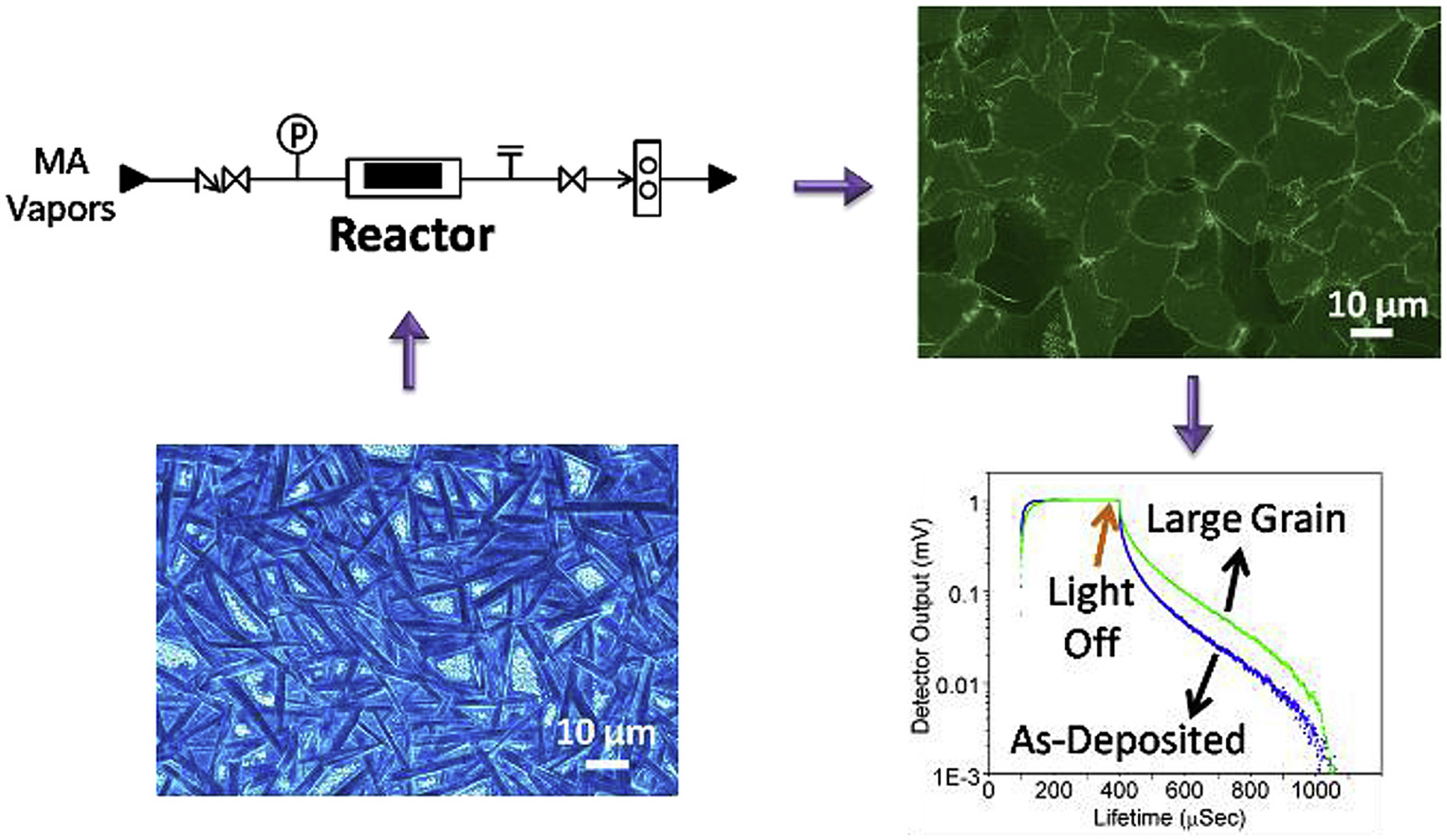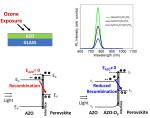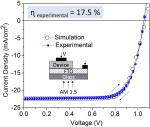Hybrid Perovskites are a family of third-generation photovoltaic materials that show exceptional performance. Due to a unique conbination of properties, some of which are not completely understood, perovskites are remarkably defect tolerant, even when made with “simple” and “dirty” processes such as spin-coating. Solar cells with efficiency upto 23.6% has been demonstrated. High-performance combined with the ease of fabication, have made perovskite the most promising thin-film technology on the horizon.
Morphology of the deposited films has a strong effect on the electro-optic properties of the material and hence, device performance. A big focus of our work is finding ways of manipulating the morphology of perovskite thin-films (See figure from Chouhan et al. 2017). Using a combination of post-processing, annealing, chemical treatment, and tuning the surface energy of the substrate, we have demonstrated order of magnitude improvement in grain-size, and upto 5% absolute improvement in efficency.
Interface often limits the device performance. We have demonstrated techniques to tune the interface between the transport layers and perovskite to improve charge extractiong and reduce recombination. Some of the reliability issues also stem from the interface, especially organic/perovskite interfaces. We are investigating alternative oxide-based transport layers that can replace the conventional organic transport layers in perovskite solar cells.
Finally, we focus on novel compositions. Hybrid perovskite represent a large family of materials, with range of bandgaps and other properties. For example, large bandgap perovskite are more suitable for tandem solar cells. Composition is also intricately related to stability. Playing with the organic cation and halides, we are trying to come up with more stable perovskites. One of the central challenges for perovskite is the presence of lead. Despite significant effort, good alternatives to lead have not been found yet. Using a combination of calculations and chemistry thumbrules, we are searching for alternative perovskite compositions that are low-lead or lead-free.


